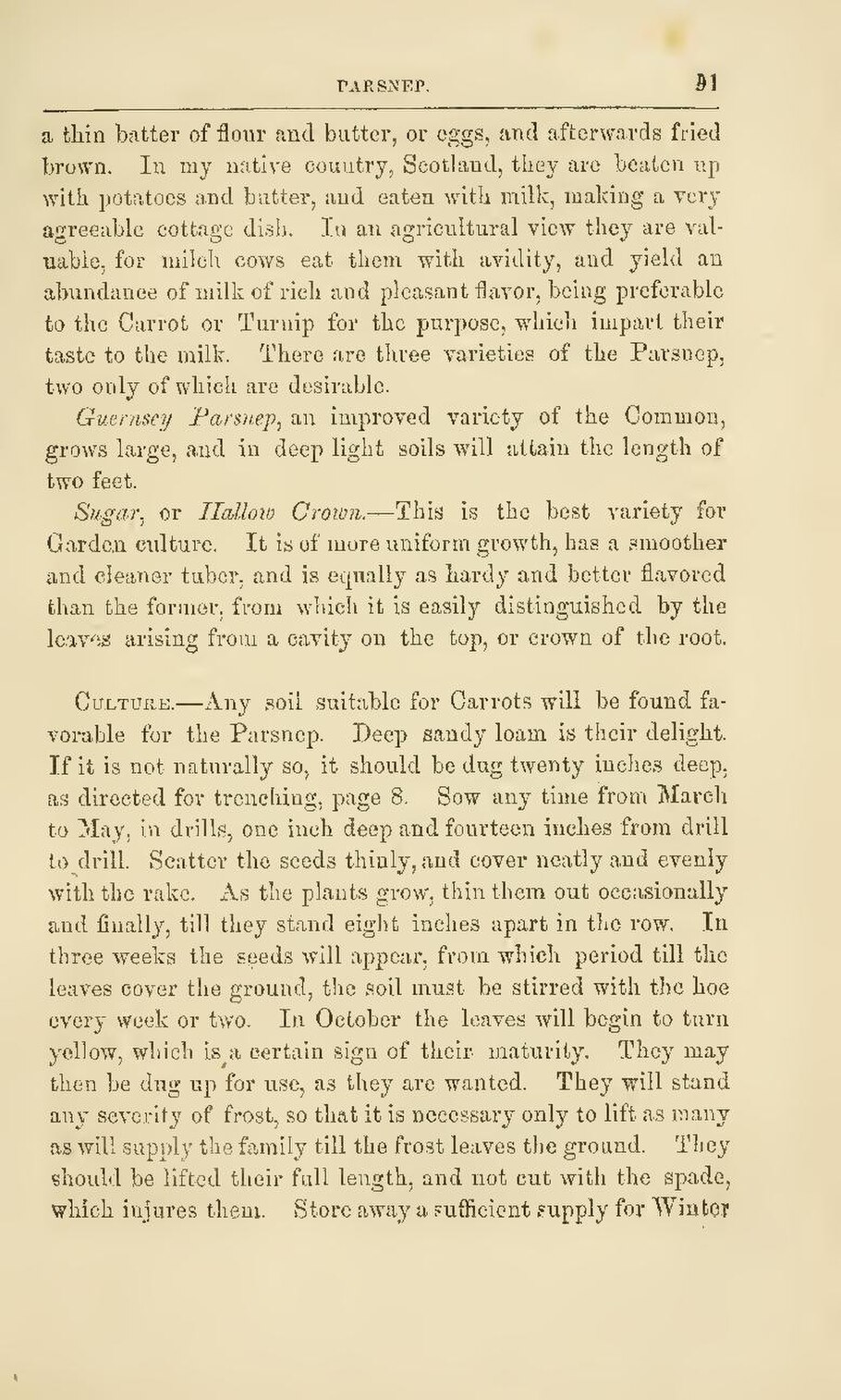a thin batter of flour and butter, or eggs, and afterwards fried brown. In my native country, Scotland, they are beaten up with potatoes and butter, and eaten with milk, making a very agreeable cottage dish. In an agricultural view they are valuable, for milch cows eat them with avidity, and yield an abundance of milk of rich and pleasant flavor, being preferable to the Carrot or Turnip for the purpose, which impart their taste to the milk. There are three varieties of the Parsnep, two only of which are desirable.
Guernsey Parsnep, an improved variety of the Common, grows large, and in deep light soils will attain the length of two feet.
Sugar, or Hallow Crown.—This is the best variety for Garden culture. It is of more uniform growth, has a smoother and cleaner tuber, and is equally as hardy and better flavored than the former, from which it is easily distinguished by the leaves arising from a cavity on the top, or crown of the root.
Culture.—Any soil suitable for Carrots will be found favorable for the Parsnep. Deep sandy loam is their delight. If it is not naturally so, it should be dug twenty inches deep, as directed for trenching, page 8. Sow any time from March to May, in drills, one inch deep and fourteen inches from drill to drill. Scatter the seeds thinly, and cover neatly and evenly with the rake. As the plants grow, thin them out occasionally and finally, till they stand eight inches apart in the row. In three weeks the seeds will appear, from which period till the leaves cover the ground, the soil must be stirred with the hoe every week or two. In October the leaves will begin to turn yellow, which is a certain sign of their maturity. They may then be dug up for use, as they are wanted. They will stand any severity of frost, so that it is necessary only to lift as many as will supply the family till the frost leaves the ground. They should be lifted their full length, and not cut with the spade, which injures them. Store away a sufficient supply for Winter
